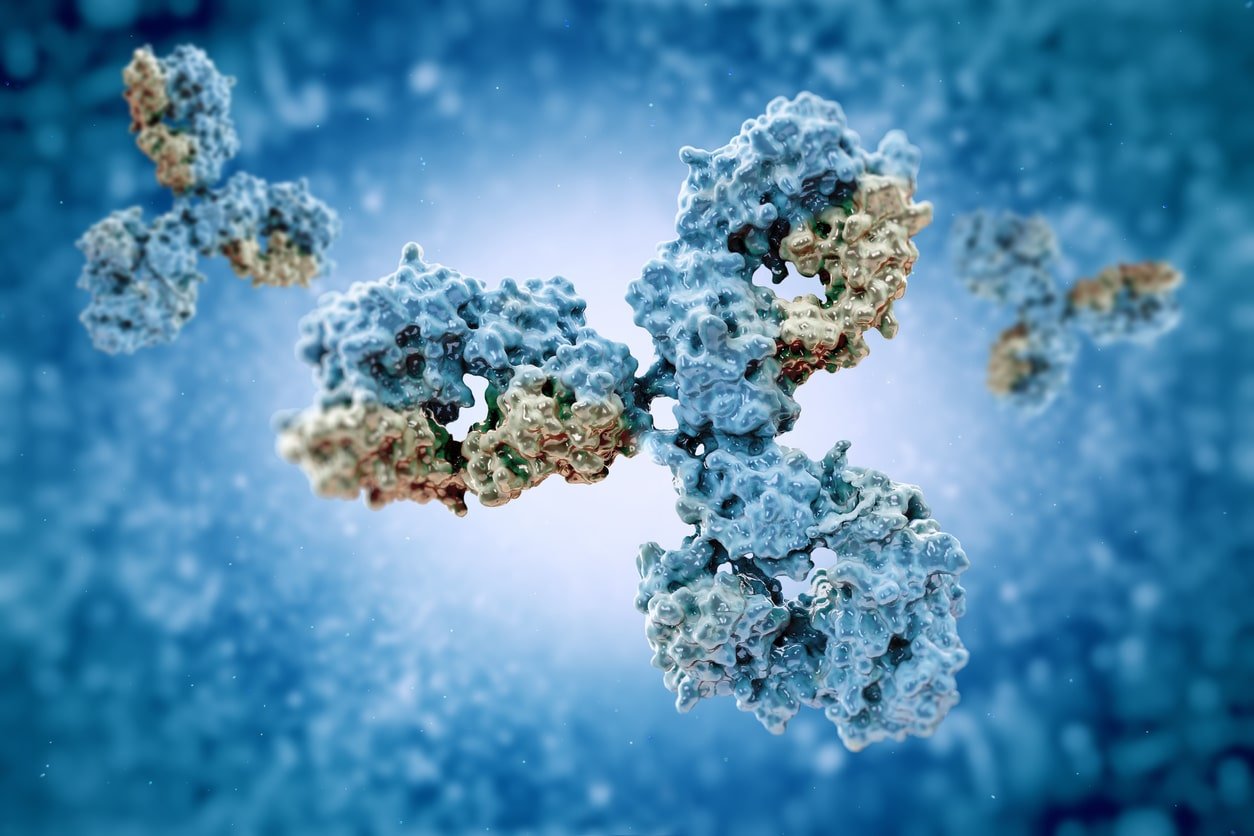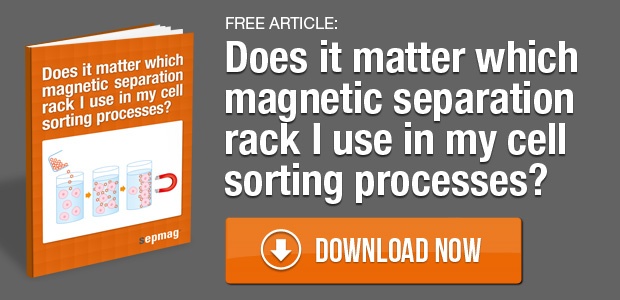Magnetic beads are used for biomagnetic separation procedures to enrich the population of a specific cell, or isolate biomolecules (such as protein, or nucleic acid) for purification purposes. Since the affinity between antibody and antigen is strong and specific, antibodies are often conjugated to the surface of magnetic beads – called “surface coating” – in order to bind their ligands for enrichment.
Magnetic beads are made of polymer (typically polystyrene) and iron oxide nanoparticles (usually magnetite (Fe3O4)), and are commercially available in a variety of sizes and surface chemistries. The size of the magnetic beads plays a major role; larger micrometer-sized beads have narrower size distribution and behave more predictably in a magnetic field gradient than smaller nanometer-sized beads. When designing or troubleshooting a biomagnetic separation process it is important to evaluate the type of magnetic separation rack used and the size of the magnetic beads in addition to the surface chemistry and conjugation procedure. Occasionally, the conjugation method is blamed for poor target recovery, while the problem is due to a poorly designed magnetic separation rack.
Magnetic bead antibody binding and attachment chemistry
There are two main methods of binding antibodies to magnetic beads: covalent bonds and noncovalent bonds. Streptavidin-biotin and protein A/G are examples of the latter. In the streptavidin beads, the antibody must be pre-conjugated with biotin before incubating with beads. Protein A/G is an attractive option as these proteins bind most IgG antibodies.
Covalent attachment chemistry is another method for creating magnetic bead antibody conjugates. The benefit of this method is that the attachment is irreversible. When working with antibodies or any protein, the most common attachment point is amine groups followed by carboxyl and sulfhydryl groups less often. The four most common magnetic bead coatings are as following:
- Carboxylic acid-hydrophilic bead that binds amine groups at pH 5-6 at room temperature;
- Amine-hydrophilic bead that binds aldehydes at neutral to high pH at room temperature;
- Tosyl groups-hydrophobic bead that binds amine and sulfhydryl groups at neutral pH and 37ºC;
- Epoxy-hydrophilic bead that binds amine and sulfhydryl groups at neutral pH at a range of temperatures.
Surface chemistries can also be attached either directly to the bead surface or indirectly through a reactive intermediate.
Uses for magnetic beads antibody conjugation
The most common uses for antibody-conjugated magnetic beads include mostly immunoassay and immunoprecipitation tests and less commonly magnetic cell sorting. Magnetic cell sorting requires magnetic beads conjugated with antibodies that are able to recognize specific cell surface receptors. These receptors are chosen as they are unique to the target cell type. As an example, if the target cell is a T-cell, then the magnetic beads will have antibodies toward CD4 or CD8. This would be a fairly general enrichment of T-cells. From here, additional magnetic sorting rounds can be completed with more specific antibodies to enrich a particular subpopulation of T-cells to match the goals of the study.
A similar method is used in immunoassay and immunoprecipitation tests, but in this case the goal is to measure the presence/concentration of a macromolecule, and enrich proteins (not whole cells), respectively. The size of the magnetic beads will likely be different between magnetic activated cell sorting and immunoprecipitation protocols, but the chemistry procedure followed to attach antibodies will be similar. The commercial availability of magnetic beads in a range of sizes and surface coatings makes these types of experiments easy to design and perform. Magnetic beads offer an extremely flexible scaffold that can be tailored for specific applications by conjugating a specific ligand suited for binding the molecules of interest.





